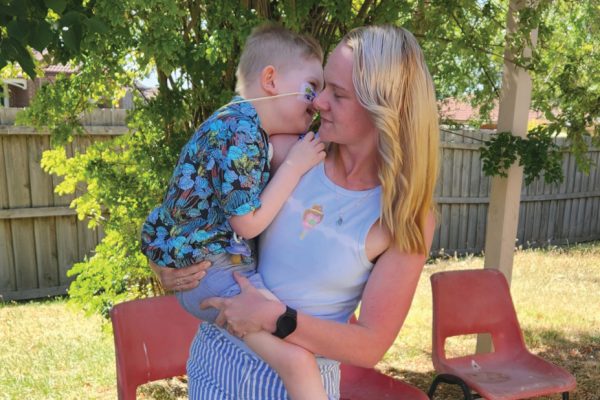
AAC tips to help you at home
Whether your child is using a low-tech or high-tech device, your child’s speech therapist will always be your go-to regarding the best ways to help your child develop their AAC skills, but to help you feel a little more sure-footed when it’s just you, your child and their device, here are some tips to keep in mind.
KEEP THE DEVICE AROUND AT ALL TIMES
Make sure your child’s device is within arm’s reach at all times. And keep it charged! Bring it to the dinner table, have it next to them on the sofa, prop it on a chair in the bathroom! If your child can physically access their device easily you’re on the right track to actually getting them to use it!
GET EVERYONE INVOLVED
Your child will most likely have one key communication partner (i.e. you!) but everyone in the household can model and respond to your child when they use the device. Chat to siblings about how they can respond, chat about the day and even integrate into games.
RESPOND TO YOUR CHILD IMMEDIATELY WHEN THEY USE THE DEVICE
If your child doesn’t receive instant feedback when they are talking they will lose motivation; no one likes to be ignored – we all want to be heard when we’re communicating. It’s important to acknowledge and encourage all attempts to use the device, even when wrong words are used. Which brings us to…
ALLOW THEM TO BABBLE
Your child may not use their AAC device meaningfully to start with – buttons may get pushed in a random way, ‘wrong’ things may be pointed to and there may lots of repetition of certain words. This is totally fine – your child will discover words and functions by ‘playing’. We don’t discourage verbal children from babbling and repeating words over and over, let’s allow our nonverbal kids to do the same.
MODEL, MODEL, MODEL
Modelling speech with your child’s chosen device is key to helping them adopt usage themselves.
To model effectively ensure that you have your child’s attention before you start and say words aloud as you use the device. Keep in mind that you don’t have to model every single word you say – this is not just practical, model the core words or the most important words in a sentence. For example, if you want to say, ‘we are going to school now’, model the words ‘go’ (don’t worry about the correct tense) and ‘store’. Also, try to model at a level just above that of your child so if they are at a one word sentence, use two words instead – i.e. brown dog, instead of just dog.
CREATE OPPORTUNITIES TO USE THE DEVICE TOGETHER
There are so many ways you can incorporate speech with your child’s device into your day here are just a few ideas:
Read a simple picture book: one of our Source Kids had lots of success with modelling and reading the Spot the Dog books as they include lots of core words.
Look at a family photo album together: Family photos are highly motivating for kids and provide lots of opportunities to chat. Look at what people are wearing, where they are, ages etc.
Discuss daily routines: Take a little time out to talk about what’s coming up in the week ahead, what you need to do tomorrow and spend five minutes chatting about the day.
Cook together: Following a recipe together provides some great opportunities to model simple instructions and core words. The same goes for an art and craft project.






